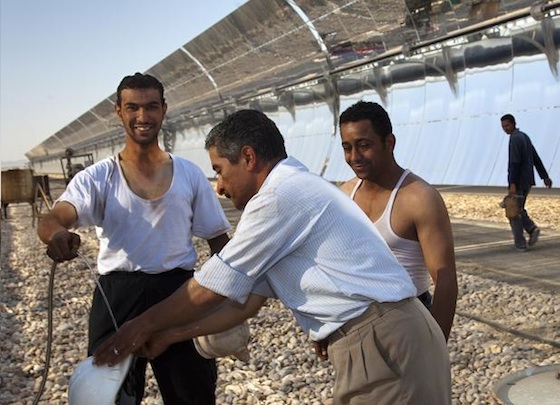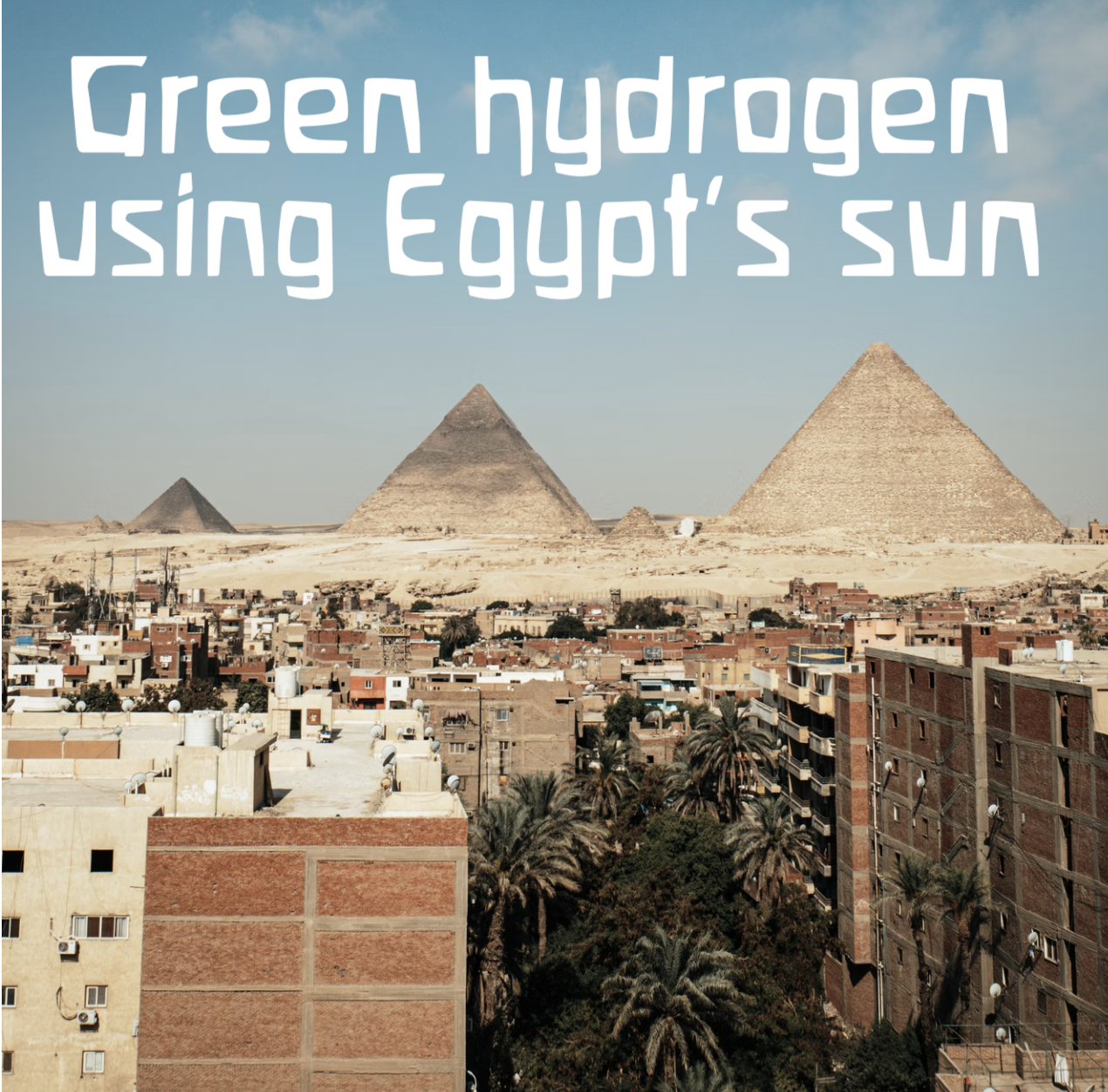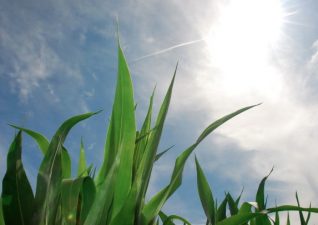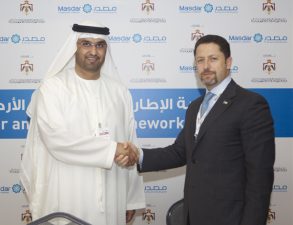Hydrogen is a fuel of the future if it’s created with renewable sources like the sun.
With Tehran, Iran enveloped in black smog from dust and fuel and Cairo constantly being known as one of the more air polluted cities in the world, it is good to see that the United Arab Emirates, blessed with fossil fuels, making good on making the world better.
Masdar, a renewable energy company that built the net-zero energy city under its namesake, along with Hassan Allam Utilities, are investing in the future of renewable energy. They announced just now that they will develop green hydrogen production plants in the Suez Canal Economic Zone and on the Mediterranean coast.
What is green hydrogen?
According to experts at the World Economic Forum, green hydrogen is the only version of hydrogen that is sustainable. Hydrogen, around us everywhere in air and water, is the simplest and smallest element in the periodic table. No matter how it is produced, it ends up with the same carbon-free molecule.
However, the pathways to produce it are very diverse, and so are the emissions of greenhouse gases like carbon dioxide (CO2) and methane (CH4).
Green hydrogen is defined as hydrogen produced by splitting water into hydrogen and oxygen using renewable electricity. This is a very different pathway compared to both grey and blue.
Green hydrogen featured is a number of emissions reduction pledges at the UN Climate Conference, COP26, is a means to decarbonize heavy industry, long haul freight, shipping, and aviation. Governments and industry have both acknowledged hydrogen as an important pillar of a net zero economy.
The Egyptian organizations concerned include the New and Renewable Energy Authority, the Egyptian Electricity Transmission Company, The Sovereign Fund of Egypt, and The General Authority for Suez Canal Economic Zone.
HE Mostafa Kamal Madbouly, Prime Minister of the Arab Republic of Egypt, expressed his happiness at this signing with the UAE, highlighting the directives of President Abdel Fattah El-Sisi, to strengthen and consolidate relations with the UAE in various sectors, so as to contribute to achieving the interests of the two nations.

He stressed that the state is working to encourage investment in green energy projects, due to Egypt’s potential to become an important pivotal and regional hub in this vital sector, which is expected to transform the global energy system during the upcoming period. These projects will also accelerate energy transition process in the region.
Sultan bin Ahmed Al Jaber, UAE Minister of Industry and Advanced Technology, UAE Special Envoy for Climate Change and Chairman of Masdar, said, “Today’s partnership agreements to explore the development of green hydrogen production demonstrates the strength of the close relationship between The United Arab Emirates and the Arab Republic of Egypt.
“These projects will build on the UAE’s and Masdar’s position as an early mover in the global hydrogen market and expand our capacity to deliver zero carbon energy solutions. As our two countries prepare to host the next two COPs [United Nations climate events], we look forward to working with our partners in Egypt to make practical advances in the energy transition that will provide significant benefits for the economy and the climate.”
Making hydrogen from Egypt’s sun and wind
Egypt has abundant solar and wind energy resources that would provide a suitable location for renewable energy projects at a competitive cost. Along with its proximity to global markets that are looking to import green hydrogen via the Suez Canal, this will allow significant growth for this sector in the future, and the agreements are in line with “Egypt Vision 2030” and its sustainable development strategy.
In the first phase of the project, Hassan Allam Utilities and Masdar aim to establish a green hydrogen manufacturing facility, which would be operational by 2026, producing 100,000 tonnes of e-methanol annually for bunkering in the Suez Canal.
The electrolyser facilities in the Suez Canal Economic Zone and on the Mediterranean could be extended to up to 4 GW by 2030 to produce 2.3 million tonnes of green ammonia for export as well as supply green hydrogen for local industries, according to materials released to the press.
Masdar and Hassan Allam Utilities see Egypt as a hub for green hydrogen production, targeting the bunkering market, export to Europe, and boosting local industry. Egypt enjoys abundant solar and wind resources that allow generation of renewable power at a highly competitive cost –a key enabler for green hydrogen production.
Active in more than 40 countries across the world, Masdar is invested in a portfolio of renewable energy assets with a combined value of more than US$20 billion, and a total capacity of more than 15 GW. In December, it was announced that Abu Dhabi National Energy Company PJSC (TAQA), Mubadala Investment Company and Abu Dhabi National Oil Company (ADNOC) will partner under the Masdar brand to create a truly global, clean-energy powerhouse intended to spearhead the drive to net-zero carbon by 2050 while cementing the UAE’s leading role in green hydrogen.




